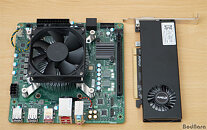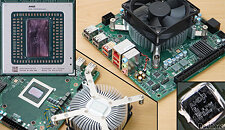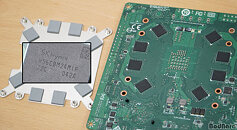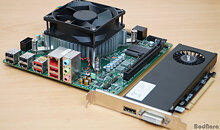
AMD Granite Ridge and Strix Point Zen 5 Die-sizes and Transistor Counts Confirmed
AMD is about give the new "Zen 5" microarchitecture a near-simultaneous launch across both its client segments—desktop and mobile. The desktop front is held by the Ryzen 9000 "Granite Ridge" Socket AM5 processors; while Ryzen AI 300 "Strix Point" powers the company's crucial effort to capture Microsoft Copilot+ AI PC market share. We recently did a technical deep-dive on the two. HardwareLuxx.de scored two important bits of specs for both processors in its Q&A interaction with AMD—die sizes and transistor counts.
To begin with, "Strix Point" is a monolithic silicon, which is confirmed to be built on the TSMC N4P foundry node (4 nm). This is a slight upgrade over the N4 node that the company built its previous generation "Phoenix" and "Hawk Point" processors on. The "Strix Point" silicon measures 232.5 mm² in area, which is significantly larger than the 178 mm² of "Hawk Point" and "Phoenix." The added die area comes from there being 12 CPU cores instead of 8, and 16 iGPU compute units instead of 12; and a larger NPU. There are many other factors, such as the larger 24 MB CPU L3 cache; and the sizes of the "Zen 5" and "Zen 5c" cores themselves.
To begin with, "Strix Point" is a monolithic silicon, which is confirmed to be built on the TSMC N4P foundry node (4 nm). This is a slight upgrade over the N4 node that the company built its previous generation "Phoenix" and "Hawk Point" processors on. The "Strix Point" silicon measures 232.5 mm² in area, which is significantly larger than the 178 mm² of "Hawk Point" and "Phoenix." The added die area comes from there being 12 CPU cores instead of 8, and 16 iGPU compute units instead of 12; and a larger NPU. There are many other factors, such as the larger 24 MB CPU L3 cache; and the sizes of the "Zen 5" and "Zen 5c" cores themselves.










